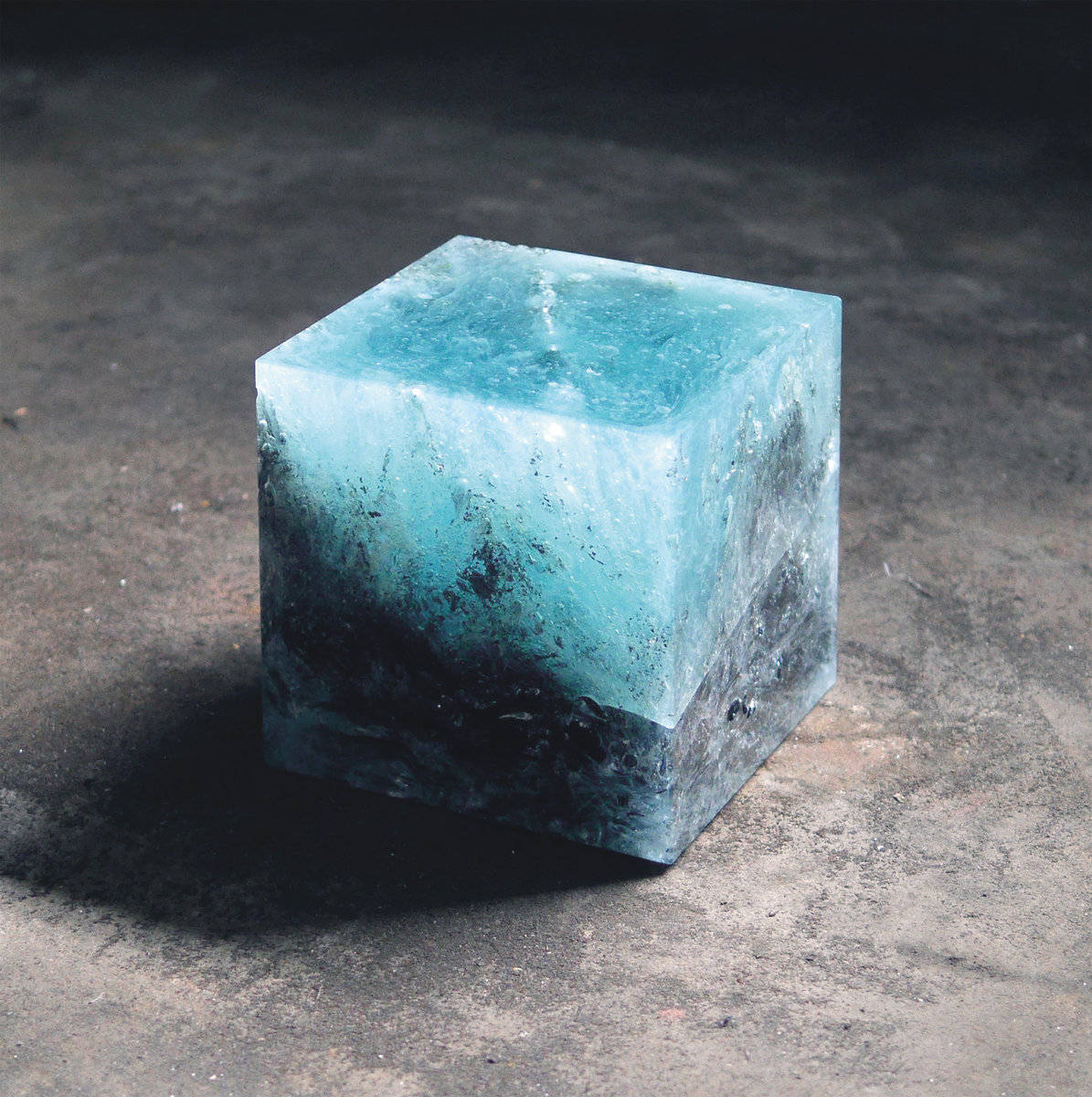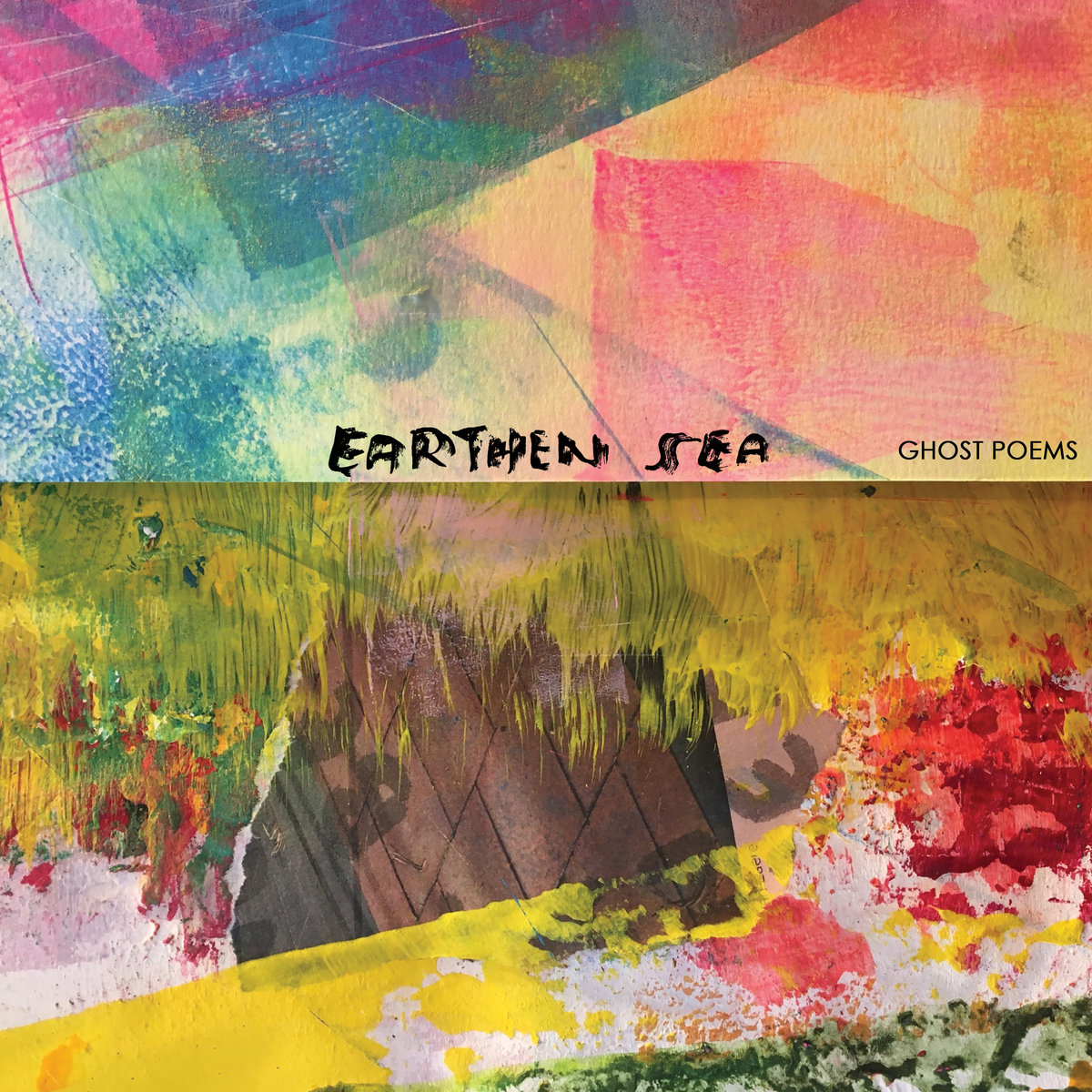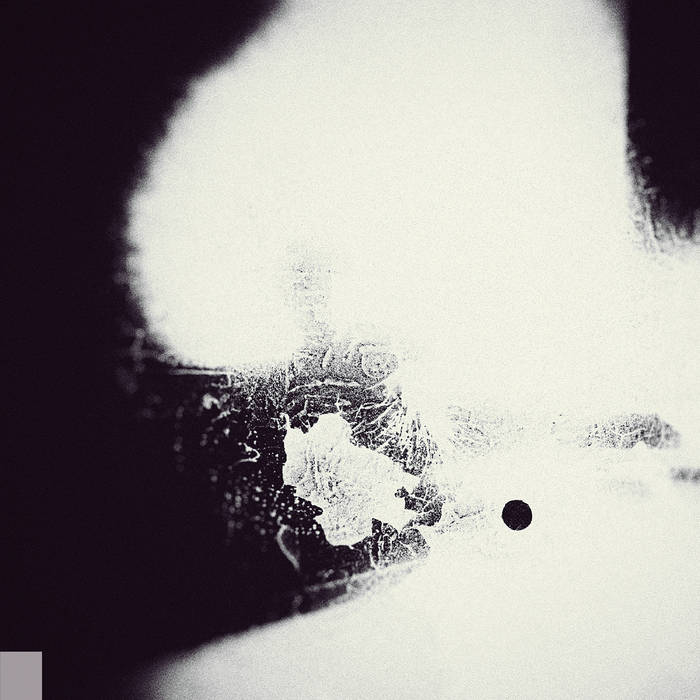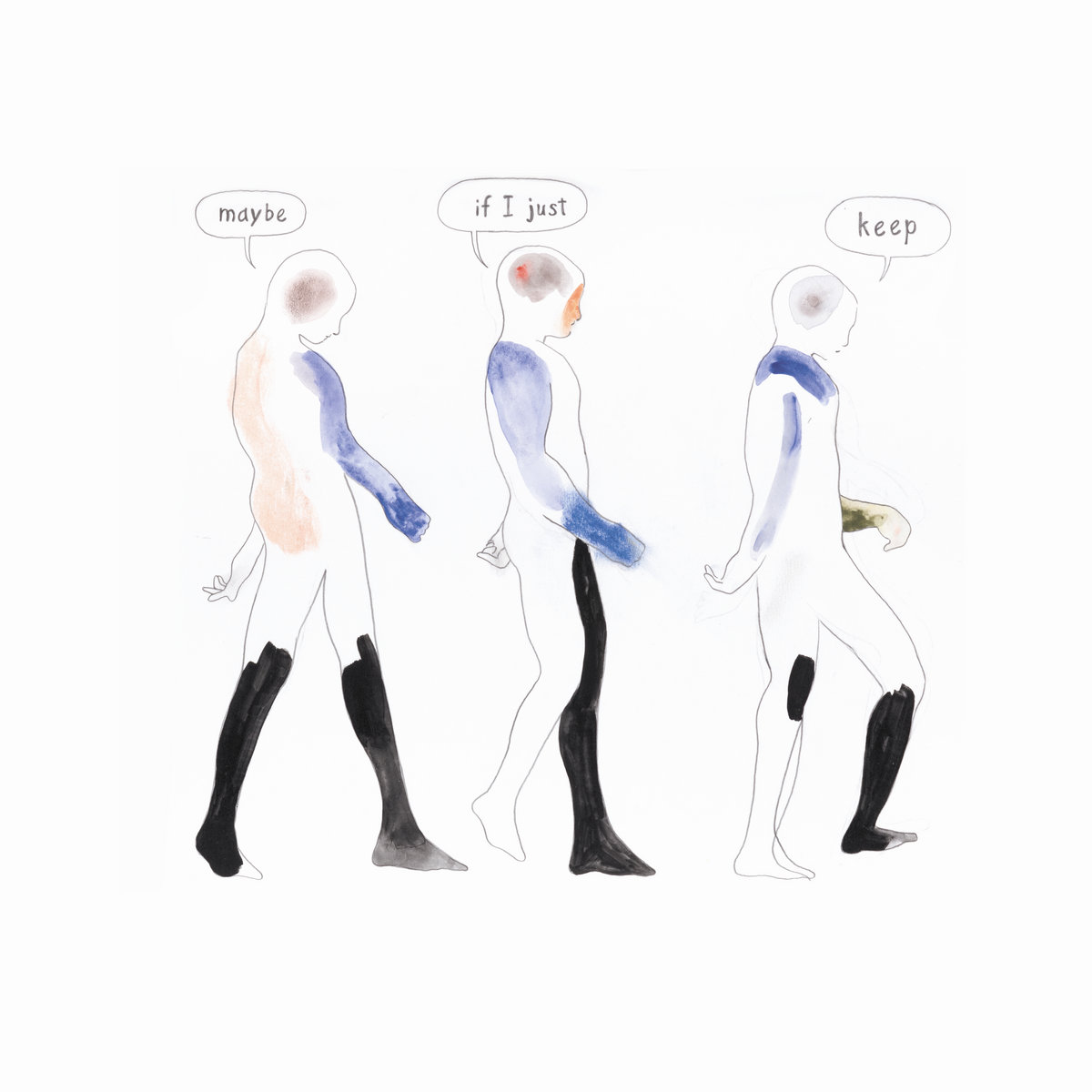 Jeff Barsky has been quietly releasing alternately sublime and noise-ravaged guitar albums for years and this latest album finds him returning to LA's oft ahead-of-the-curve Already Dead Tapes (where he last surfaced with 2015's Flickering). Normally, I would not describe an edition of 100 tapes as a major release, but most of Barsky's solo work has historically appeared on his own Insect Fields imprint so Celestial Cycles will likely reach more ears than usual. Fittingly, it is an especially strong album, capturing Barsky at the absolute height of his powers. While few solo guitarists can summon dreamlike beauty from their ax as reliably and masterfully as Barsky, the centerpiece of this album is unquestionably the swirling and nightmarish closing epic "Become The Birds," which arguably recaptures the magic of Campbell Kneale's Birchville Cat Motel project in its prime (which is damn high praise coming from me).
Jeff Barsky has been quietly releasing alternately sublime and noise-ravaged guitar albums for years and this latest album finds him returning to LA's oft ahead-of-the-curve Already Dead Tapes (where he last surfaced with 2015's Flickering). Normally, I would not describe an edition of 100 tapes as a major release, but most of Barsky's solo work has historically appeared on his own Insect Fields imprint so Celestial Cycles will likely reach more ears than usual. Fittingly, it is an especially strong album, capturing Barsky at the absolute height of his powers. While few solo guitarists can summon dreamlike beauty from their ax as reliably and masterfully as Barsky, the centerpiece of this album is unquestionably the swirling and nightmarish closing epic "Become The Birds," which arguably recaptures the magic of Campbell Kneale's Birchville Cat Motel project in its prime (which is damn high praise coming from me).
The brief yet lovely "Follow the Moon" introduces Celestial Cycles' general aesthetic of quavering drones, flickering harmonic whines, and rippling flurries of hammer-ons and pull-offs before the album begins in earnest with the more substantial "Celestial Shift." Given the loop-based nature of Insect Factory, extended durations tend to almost always result in increased textural and harmonic sophistication and "Celestial Shift" is a solid illustration of that, as the expected shimmering beauty is nicely enhanced with a host of twinkling, smoldering, buzzing, and seesawing themes. If the remainder of the album was simply four more variations of that vision, I would be perfectly happy, but Barsky instead chose to go with a parade of cool twists and curveballs and the album is better and more memorable for it.


 I only recently heard Laura Cannell’s fabulous album The Earth With Her Crowns from 2020 and could easily spend 500 words praising its dazzling allure and stark—yet comforting—beauty. Time marches on, though, and since she already has two new releases in 2022 I am focusing on the present year. Both are excellent but, of the two, I am most immediately impressed by Antiphony, wherein Cannell uses alto, bass, and tenor recorders to riff on the birdsong of rural Suffolk , where she lives, which called to her amid the quietness of lockdown. It is riveting and a work that I am unlikely to set aside any time soon.
I only recently heard Laura Cannell’s fabulous album The Earth With Her Crowns from 2020 and could easily spend 500 words praising its dazzling allure and stark—yet comforting—beauty. Time marches on, though, and since she already has two new releases in 2022 I am focusing on the present year. Both are excellent but, of the two, I am most immediately impressed by Antiphony, wherein Cannell uses alto, bass, and tenor recorders to riff on the birdsong of rural Suffolk , where she lives, which called to her amid the quietness of lockdown. It is riveting and a work that I am unlikely to set aside any time soon.  On the trio's first album in seven years (the largest period of dormancy ever for them), Locrian simultaneously return to their origins while evolving and refining their sound forward. Stripped back to the barest essence of their sound but with some 17 years of evolution, New Catastrophism feels both like a reset but also a culmination of everything they have accomplished thus far.
On the trio's first album in seven years (the largest period of dormancy ever for them), Locrian simultaneously return to their origins while evolving and refining their sound forward. Stripped back to the barest essence of their sound but with some 17 years of evolution, New Catastrophism feels both like a reset but also a culmination of everything they have accomplished thus far. This latest release from the long-running ambient dub solo project of erstwhile Mi Ami/Black Eyes bassist Jacob Long is stirring up some feelings of regret about how I managed to sleep on this project for so long. While I am not yet sure if Ghost Poems simply caught me at the right time or if Long has been unusually inspired recently, my previous exposures to Earthen Sea left me feeling like the ambient/dub balance was too heavily weighted towards the "ambient" side to leave a deep impression. I suspect the balance has not changed all that much since I last checked in, but Long seems to have made a big leap forward in perfecting his execution with this album (it "further refines his fragile, fractured palette into fluttering arrythmias of dust, percussion, and yearning," according to the label). Apparently, I am very much into fluttering arrhythmias of yearning now, as the first half of this album boasts a handful of pieces that can stand with just about anything in Kranky's rich and influential discography: rather than resembling dub techno that has been deconstructed and dissolved into a soft-focus haze, Ghost Poems often feels like Long has managed to seamlessly combine the best of ambient and the best of dub techno into something fresh, wonderful, and uniquely his own.
This latest release from the long-running ambient dub solo project of erstwhile Mi Ami/Black Eyes bassist Jacob Long is stirring up some feelings of regret about how I managed to sleep on this project for so long. While I am not yet sure if Ghost Poems simply caught me at the right time or if Long has been unusually inspired recently, my previous exposures to Earthen Sea left me feeling like the ambient/dub balance was too heavily weighted towards the "ambient" side to leave a deep impression. I suspect the balance has not changed all that much since I last checked in, but Long seems to have made a big leap forward in perfecting his execution with this album (it "further refines his fragile, fractured palette into fluttering arrythmias of dust, percussion, and yearning," according to the label). Apparently, I am very much into fluttering arrhythmias of yearning now, as the first half of this album boasts a handful of pieces that can stand with just about anything in Kranky's rich and influential discography: rather than resembling dub techno that has been deconstructed and dissolved into a soft-focus haze, Ghost Poems often feels like Long has managed to seamlessly combine the best of ambient and the best of dub techno into something fresh, wonderful, and uniquely his own. Similar to his recent works Family Secret and House Blessing, the newest work from drummer/percussionist Jon Mueller features little in the way of overt rhythms or obvious instrumentation. Instead, The Future is Unlimited, Always captures Mueller at his most spacious: layers of frequencies and tones that are as engaging as they are mysterious, and capturing more than just audio, but a deeper sense of existence.
Similar to his recent works Family Secret and House Blessing, the newest work from drummer/percussionist Jon Mueller features little in the way of overt rhythms or obvious instrumentation. Instead, The Future is Unlimited, Always captures Mueller at his most spacious: layers of frequencies and tones that are as engaging as they are mysterious, and capturing more than just audio, but a deeper sense of existence. In general, releasing a three-hour album is a highly dubious endeavor, as such an extreme length usually turns even very good music into an endurance test and virtually guarantees that few people will ever listen to the entire opus more than once. When "Memphis dronegaze cult" Nonconnah do it, however, it feels like an absolute godsend. Part of that is because the husband/wife duo of Zachary and Denny Wilkerson Corsa lead what is possibly the most consistently fascinating and wonderful shoegaze/drone project around, but there is an equally important second part as well: the Corsas seem to be constantly collaborating with a host of talented guests. Unsurprisingly, that generates an ungodly amount of material and each major new Nonconnah album feels like a mere tantalizing glimpse into the innumerable killer jams and recording sessions that led up to the release. When I say that Don't Go Down to Lonesome Holler could have probably been an equally brilliant six- or nine-hour album, it is not hyperbole: there are over 50 credited performers involved in this album including folks from heavy hitters like Archers of Loaf, Swans, and No Age (as well as more than 60 instruments ranging from singing saws to cats). My guess is that the only limiting factor was how much time the Corsas could spend culling and editing their mountain of killer material without starting to lose their goddamn minds. This album is an absolute revelation ("Nonconnah's most comprehensive vision yet for the American halfpocalypse," according to the label).
In general, releasing a three-hour album is a highly dubious endeavor, as such an extreme length usually turns even very good music into an endurance test and virtually guarantees that few people will ever listen to the entire opus more than once. When "Memphis dronegaze cult" Nonconnah do it, however, it feels like an absolute godsend. Part of that is because the husband/wife duo of Zachary and Denny Wilkerson Corsa lead what is possibly the most consistently fascinating and wonderful shoegaze/drone project around, but there is an equally important second part as well: the Corsas seem to be constantly collaborating with a host of talented guests. Unsurprisingly, that generates an ungodly amount of material and each major new Nonconnah album feels like a mere tantalizing glimpse into the innumerable killer jams and recording sessions that led up to the release. When I say that Don't Go Down to Lonesome Holler could have probably been an equally brilliant six- or nine-hour album, it is not hyperbole: there are over 50 credited performers involved in this album including folks from heavy hitters like Archers of Loaf, Swans, and No Age (as well as more than 60 instruments ranging from singing saws to cats). My guess is that the only limiting factor was how much time the Corsas could spend culling and editing their mountain of killer material without starting to lose their goddamn minds. This album is an absolute revelation ("Nonconnah's most comprehensive vision yet for the American halfpocalypse," according to the label). Following a multitude of self-released tapes and digital releases, Vagrancies is Austin, Texas's Andrew Anderson's first CD based work. Ostensibly created by the instrumentation and sources listed in the disc's liner notes, Anderson's treatment renders them largely unidentifiable, instead using them to construct something else entirely. Consisting of four long-form pieces connected with shorter interludes, Vagrancies covers a lot of ground, with an impressive amount of variety from piece to piece, but still a strong sense of continuity from one piece to the next.
Following a multitude of self-released tapes and digital releases, Vagrancies is Austin, Texas's Andrew Anderson's first CD based work. Ostensibly created by the instrumentation and sources listed in the disc's liner notes, Anderson's treatment renders them largely unidentifiable, instead using them to construct something else entirely. Consisting of four long-form pieces connected with shorter interludes, Vagrancies covers a lot of ground, with an impressive amount of variety from piece to piece, but still a strong sense of continuity from one piece to the next. I feel like I got into this Slovenian "imaginary folk" trio a bit late, as 2019’s A Universe That Roasts Blossoms For A Horse was the first Širom album that I picked up. However, it also seems like each new album is the perfect time to discover Širom and those who join the party with this latest release are in for a real treat. Along with Belgium’s Merope and the scene centered around France’s Standard In-Fi and La Nòvia labels, Širom are one of the leading lights in a new wave of imaginative and adventurous international folk ensembles and this fourth album is their most expansive to date (“for the first time the trio…ignore the time constraints of a standard vinyl record to fashion longer, more fully developed entrancing and hypnotizing peregrinations”). Aside from making stellar use of their newly expanded song lengths, it feels like some delightful jazz influences have crept deeper into Širom’s DNA as well, as a couple of pieces feel like the various members trading wonderfully wild, visceral, and hallucinatory solos over strong, unconventional vamps (the album description also explicitly notes that Širom “echo the borderless, collective spirit of groups like Don Cherry's Organic Music Society and Art Ensemble of Chicago”). Obviously, that is enviable and excellent company to be associated with, but Širom’s influences transcend perceived boundaries of time and space so fluidly that trying to forensically determine the contents of their record collections is both hopeless and entirely beside the point. When they are at their best (which happens often here), Širom feel like a glimpse into an alternate timeline where the freewheeling adventurousness of the late ‘60s and early ‘70s never ended and everything just kept getting weirder, cooler, and more sophisticated forever (and record labels were delighted to foot the bill for anything that could potentially be the next The Hangman's Beautiful Daughter).
I feel like I got into this Slovenian "imaginary folk" trio a bit late, as 2019’s A Universe That Roasts Blossoms For A Horse was the first Širom album that I picked up. However, it also seems like each new album is the perfect time to discover Širom and those who join the party with this latest release are in for a real treat. Along with Belgium’s Merope and the scene centered around France’s Standard In-Fi and La Nòvia labels, Širom are one of the leading lights in a new wave of imaginative and adventurous international folk ensembles and this fourth album is their most expansive to date (“for the first time the trio…ignore the time constraints of a standard vinyl record to fashion longer, more fully developed entrancing and hypnotizing peregrinations”). Aside from making stellar use of their newly expanded song lengths, it feels like some delightful jazz influences have crept deeper into Širom’s DNA as well, as a couple of pieces feel like the various members trading wonderfully wild, visceral, and hallucinatory solos over strong, unconventional vamps (the album description also explicitly notes that Širom “echo the borderless, collective spirit of groups like Don Cherry's Organic Music Society and Art Ensemble of Chicago”). Obviously, that is enviable and excellent company to be associated with, but Širom’s influences transcend perceived boundaries of time and space so fluidly that trying to forensically determine the contents of their record collections is both hopeless and entirely beside the point. When they are at their best (which happens often here), Širom feel like a glimpse into an alternate timeline where the freewheeling adventurousness of the late ‘60s and early ‘70s never ended and everything just kept getting weirder, cooler, and more sophisticated forever (and record labels were delighted to foot the bill for anything that could potentially be the next The Hangman's Beautiful Daughter). This latest album from the consistently fascinating Atkinson is yet another plunge into a vibrantly textured and otherworldly dreamspace, this time drawing inspiration from an abstract dialog between house and landscape. Or more specifically, "Inside and outside, different ways of orienting a body towards the world." In keeping with that theme, Atkinson "revisited twentieth-century women artists who variously chose, and were chosen by, their homes as a place to work." Naturally, there are some other conceptual layers as well (this being a Félicia Atkinson album, after all). One of the more interesting ones is the decision to give the album a name that resembles a "fake title of a fake Godard film." In an obvious sense, that is apt given how Image Langage feels like a film with no actual images, but Godard's mischievous meaning-dissolving weirdness is also manifested in how Atkinson wields and repurposes her sounds. In more concrete terms, that means that Atkinson deliberately used instruments alternately like field recordings or characters in a murky, surreal narrative and often reduces her voice to an unpredictably drifting and elusive presence. The overall effect is like being lost in a beautiful dream where an unreliable narrator periodically drifts in with riddle-like non-clues that only lead me deeper into Atkinson's eerie, soft-focus enigma.
This latest album from the consistently fascinating Atkinson is yet another plunge into a vibrantly textured and otherworldly dreamspace, this time drawing inspiration from an abstract dialog between house and landscape. Or more specifically, "Inside and outside, different ways of orienting a body towards the world." In keeping with that theme, Atkinson "revisited twentieth-century women artists who variously chose, and were chosen by, their homes as a place to work." Naturally, there are some other conceptual layers as well (this being a Félicia Atkinson album, after all). One of the more interesting ones is the decision to give the album a name that resembles a "fake title of a fake Godard film." In an obvious sense, that is apt given how Image Langage feels like a film with no actual images, but Godard's mischievous meaning-dissolving weirdness is also manifested in how Atkinson wields and repurposes her sounds. In more concrete terms, that means that Atkinson deliberately used instruments alternately like field recordings or characters in a murky, surreal narrative and often reduces her voice to an unpredictably drifting and elusive presence. The overall effect is like being lost in a beautiful dream where an unreliable narrator periodically drifts in with riddle-like non-clues that only lead me deeper into Atkinson's eerie, soft-focus enigma. After a handful of teasing and divergent singles, Caterina Barbieri's first full-length on her own light-years imprint is finally here. To be honest, I had some early apprehensions about how well Spirit Exit would stack up against previous releases, as this is an unusual Barbieri album for a couple of significant reasons. The most obvious one, of course, is that this is the first of the Milan-based synth visionary's albums to feature vocal pieces. Equally significant is how the album was composed and recorded, however, as Barbieri's previous releases gradually took shape from her eternally evolving live performances. Spirit Exit, on the other hand, is "100% studio music, written and recorded amidst Milan's infamous, dramatic extremely strict two-month lockdown...at the very start of the pandemic in early 2020." The drama and darkness of the period unquestionably surface a lot on these pieces, but the unraveling of civilization was but one of Barbieri's major influences at the time, as Spirit Exit was also inspired by "female philosophers, mystics and poets spread across time...united in their strength at cultivating vast internal worlds." Barbieri is no slouch at cultivating vast internal worlds herself, as evidenced by the "psycho-physical effects of pattern-based repetition" explored in her earlier work and the second half of the album features several pieces that feel like instant classics. Some of Barbieri's attempts to expand her vision into more pop and dance-inspired places work a bit less well to my ears, which ultimately gives Spirit Exit a bit of a "transitional album" feel, but those pieces may someday dazzle me after being further honed by live performances or inspired collaborations (she previously managed to floor me once with Fantas and again with Fantas Variations, after all).
After a handful of teasing and divergent singles, Caterina Barbieri's first full-length on her own light-years imprint is finally here. To be honest, I had some early apprehensions about how well Spirit Exit would stack up against previous releases, as this is an unusual Barbieri album for a couple of significant reasons. The most obvious one, of course, is that this is the first of the Milan-based synth visionary's albums to feature vocal pieces. Equally significant is how the album was composed and recorded, however, as Barbieri's previous releases gradually took shape from her eternally evolving live performances. Spirit Exit, on the other hand, is "100% studio music, written and recorded amidst Milan's infamous, dramatic extremely strict two-month lockdown...at the very start of the pandemic in early 2020." The drama and darkness of the period unquestionably surface a lot on these pieces, but the unraveling of civilization was but one of Barbieri's major influences at the time, as Spirit Exit was also inspired by "female philosophers, mystics and poets spread across time...united in their strength at cultivating vast internal worlds." Barbieri is no slouch at cultivating vast internal worlds herself, as evidenced by the "psycho-physical effects of pattern-based repetition" explored in her earlier work and the second half of the album features several pieces that feel like instant classics. Some of Barbieri's attempts to expand her vision into more pop and dance-inspired places work a bit less well to my ears, which ultimately gives Spirit Exit a bit of a "transitional album" feel, but those pieces may someday dazzle me after being further honed by live performances or inspired collaborations (she previously managed to floor me once with Fantas and again with Fantas Variations, after all).
